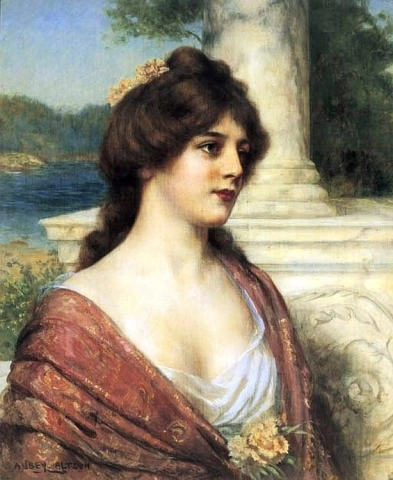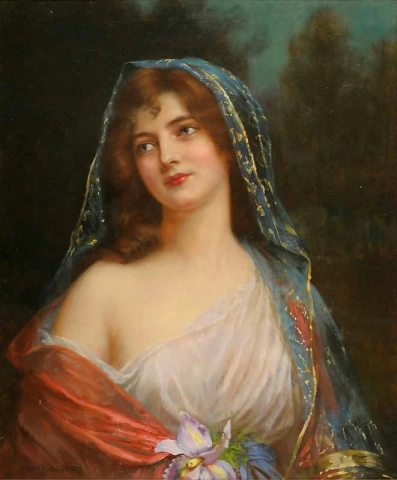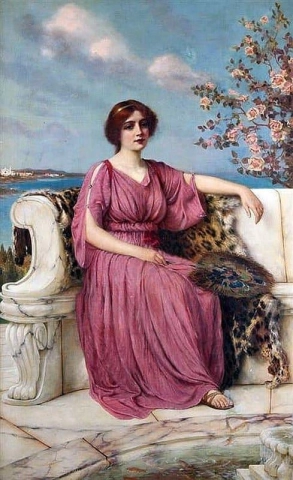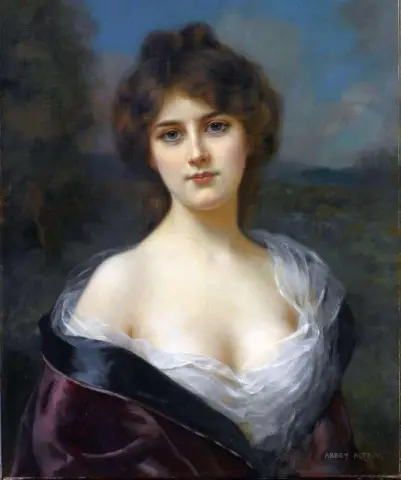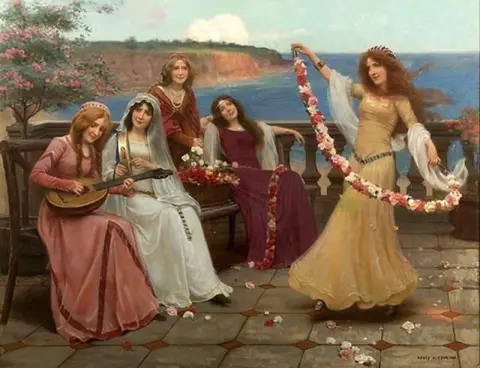

Hand painted reproductions of Abbey Altson
Abbey Altson: Renowned British Painter of Still Life and Landscape
Abbey Altson (1860–1953) was a distinguished British painter known for his still life and landscape paintings. His exceptional attention to detail, combined with a sensitive use of light, made him a significant figure within the Victorian and early 20th-century art scene. Altson's works convey a deep understanding of both the natural world and the everyday objects that inhabit it, reflecting the aesthetic preferences of the period.
Early Life and Education
Born on October 22, 1860, in London, Abbey Altson was drawn to the arts from an early age. Raised in a family that encouraged artistic expression, he pursued formal art education at the Royal Academy of Arts, where he trained in both painting and drawing. There, he developed the foundational techniques that would later define his career, including the ability to capture light, texture, and the subtleties of natural forms.
During his education, Altson was particularly inspired by the detailed and realistic works of Dutch Masters and Victorian still-life painters. He was also influenced by the evolving techniques of the Impressionist movement, which were beginning to be integrated into British art at the time. His studies at the Royal Academy allowed him to refine his skills in oil painting and focus on his chosen subjects—both landscapes and still life.
Artistic Development and Style
Abbey Altson’s style is characterized by his extraordinary technical skill and meticulous attention to detail, especially in his still-life works. His art is often defined by several key attributes:
-
Still Life Mastery: Altson is perhaps best known for his still life paintings, which include meticulously arranged fruit, flowers, and everyday objects. His works are known for their realistic and often elegant depictions of the simplest of objects. Whether portraying delicate roses, vases, or fruit, his still lifes capture the beauty of ordinary items in a way that elevates them to a level of refinement.
-
Use of Light and Shadow: One of Altson’s signature techniques was his handling of light and shadow. His works demonstrate a keen understanding of how natural light interacts with surfaces and materials. The soft, glowing light in his paintings helps imbue them with a sense of calm and timelessness. His still lifes often feature glowing objects or reflective surfaces that reveal the artist's ability to paint light as much as the objects themselves.
-
Landscape Painting: In addition to still lifes, Altson painted landscapes with similar precision and sensitivity. His landscapes often depicted serene, rural settings, including fields, gardens, and riverbanks. Much like his still-life works, his landscapes were rich in color and light, capturing the essence of nature in a manner that was both realistic and poetic.
-
Color and Texture: Altson’s use of color and texture is another defining feature of his work. His color palette was often warm and rich, with deep tones that reflected the natural world. His attention to texture was especially apparent in his still lifes, where the details of fruits, flowers, and textiles were rendered with such realism that viewers could almost feel the surface of the objects.
Themes and Significance
Abbey Altson’s work frequently revolved around themes of nature, tranquility, and the beauty of everyday life. His still-life paintings, in particular, elevated the objects he depicted to the status of fine art, showing that even the most humble items can possess elegance and dignity when painted with care.
-
The Beauty of Ordinary Life: Much of Altson’s work focused on everyday objects, such as flowers, fruit, and vases. His still-life compositions celebrate the simple joys of life, bringing attention to the often-overlooked beauty in ordinary things. His pieces convey a deep reverence for nature and the domestic life.
-
Calm and Tranquility: The sense of peacefulness that pervades Altson’s work makes it particularly resonant for those who appreciate art that evokes calm and stillness. His landscapes, with their soft light and muted colors, offer a moment of respite for the viewer, while his still lifes invite reflection on the fleeting nature of life and beauty.
-
The Passage of Time: Through his careful depiction of flowers and fruit, Altson also explored the theme of impermanence. His still lifes often depicted flowers in full bloom, fruit in ripened perfection, or objects in a state of quiet transition, capturing the fleeting nature of beauty in its various forms.
Achievements and Influence
Abbey Altson's career was largely successful, with his works displayed at major exhibitions such as those at the Royal Academy. While he was not as widely recognized as some of his contemporaries, his contribution to Victorian still-life painting is significant, particularly in his focus on capturing the delicate details of everyday objects with a refined and technically skillful approach.
-
Royal Academy Exhibitions: Altson was a frequent exhibitor at the Royal Academy, where he gained recognition for his precision in rendering still-life objects. His work was admired for its technical excellence and emotional depth.
-
Influence on British Still Life: Altson’s meticulous approach to still life influenced later generations of British still-life painters, especially those who sought to capture the beauty of nature with the same level of realism and detail. His careful study of light and texture has inspired many artists who work in the genre today.
Legacy
Abbey Altson’s legacy is one of technical skill, quiet beauty, and the celebration of everyday objects. His work remains an important part of the Victorian artistic tradition, admired for its ability to turn the mundane into the extraordinary through the careful use of light, color, and texture.
Today, his paintings are held in private collections and galleries, where they continue to be appreciated for their elegant realism and the emotional depth conveyed through seemingly simple subjects. Altson’s ability to evoke a sense of calm and timelessness through his art ensures that his works remain cherished by collectors and art enthusiasts.
Where to Find Reproductions of Abbey Altson’s Art
For those wishing to experience the enduring beauty of Abbey Altson’s work in their own homes, POD (Painting On Demand) offers high-quality oil painting reproductions of his still-life and landscape paintings. These reproductions bring the tranquility and delicate beauty of Altson’s work into any space, offering a way to enjoy his timeless artistry.
Imagine owning an original-style painting by one of the greatest artists in history. At POD, we offer you the chance to make this dream a reality. Each canvas is faithfully reproduced down to the smallest detail, allowing you to experience the beauty of the artist’s vision in your own home.
Our reproductions are crafted by experienced painters using the finest materials and time-honored methods. We are committed to delivering works of exceptional quality that will inspire and bring joy to your family for generations to come.







